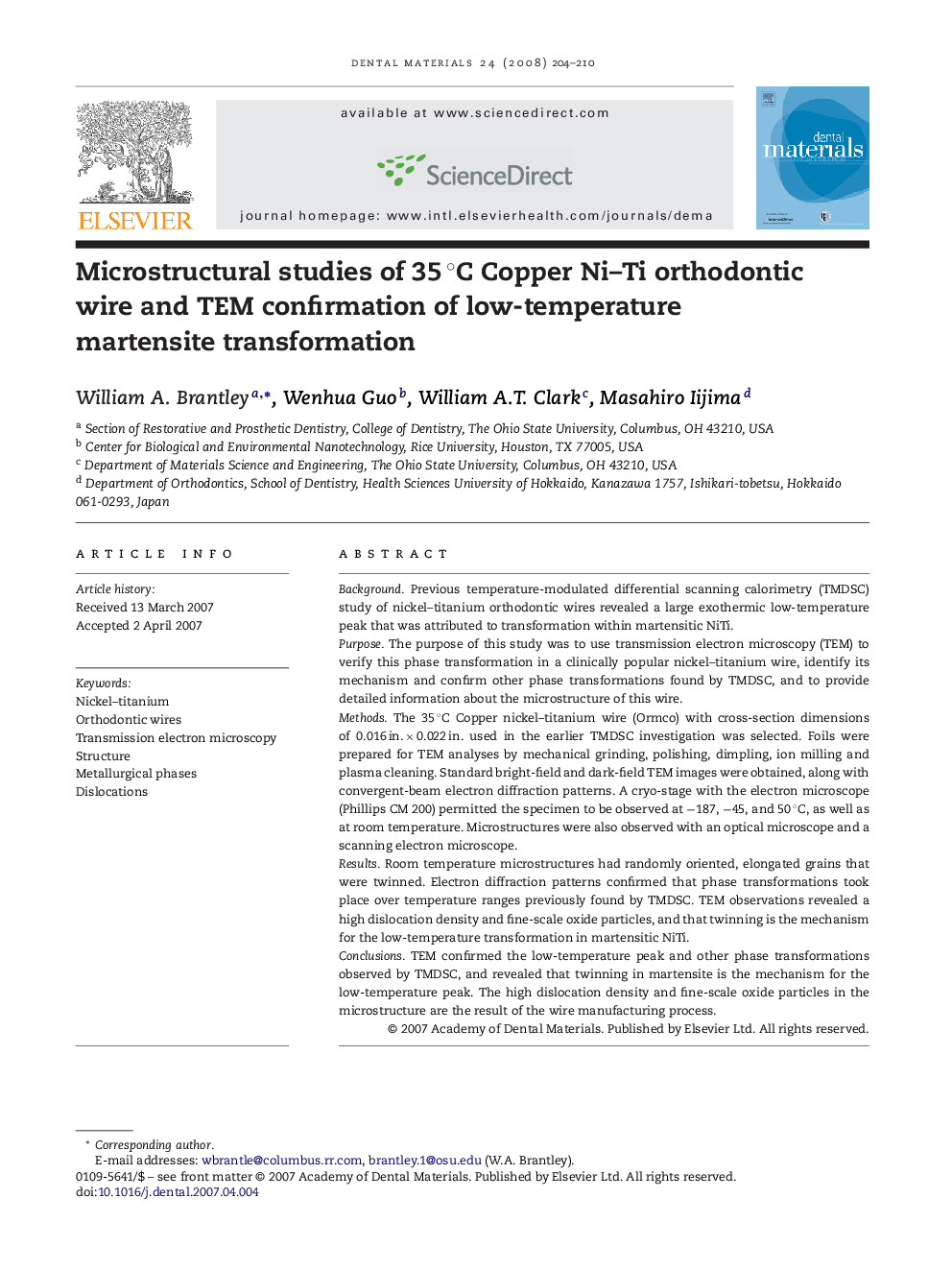| کد مقاله | کد نشریه | سال انتشار | مقاله انگلیسی | نسخه تمام متن |
|---|---|---|---|---|
| 1423251 | 986493 | 2008 | 7 صفحه PDF | دانلود رایگان |

BackgroundPrevious temperature-modulated differential scanning calorimetry (TMDSC) study of nickel–titanium orthodontic wires revealed a large exothermic low-temperature peak that was attributed to transformation within martensitic NiTi.PurposeThe purpose of this study was to use transmission electron microscopy (TEM) to verify this phase transformation in a clinically popular nickel–titanium wire, identify its mechanism and confirm other phase transformations found by TMDSC, and to provide detailed information about the microstructure of this wire.MethodsThe 35 °C Copper nickel–titanium wire (Ormco) with cross-section dimensions of 0.016 in. × 0.022 in. used in the earlier TMDSC investigation was selected. Foils were prepared for TEM analyses by mechanical grinding, polishing, dimpling, ion milling and plasma cleaning. Standard bright-field and dark-field TEM images were obtained, along with convergent-beam electron diffraction patterns. A cryo-stage with the electron microscope (Phillips CM 200) permitted the specimen to be observed at −187, −45, and 50 °C, as well as at room temperature. Microstructures were also observed with an optical microscope and a scanning electron microscope.ResultsRoom temperature microstructures had randomly oriented, elongated grains that were twinned. Electron diffraction patterns confirmed that phase transformations took place over temperature ranges previously found by TMDSC. TEM observations revealed a high dislocation density and fine-scale oxide particles, and that twinning is the mechanism for the low-temperature transformation in martensitic NiTi.ConclusionsTEM confirmed the low-temperature peak and other phase transformations observed by TMDSC, and revealed that twinning in martensite is the mechanism for the low-temperature peak. The high dislocation density and fine-scale oxide particles in the microstructure are the result of the wire manufacturing process.
Journal: Dental Materials - Volume 24, Issue 2, February 2008, Pages 204–210